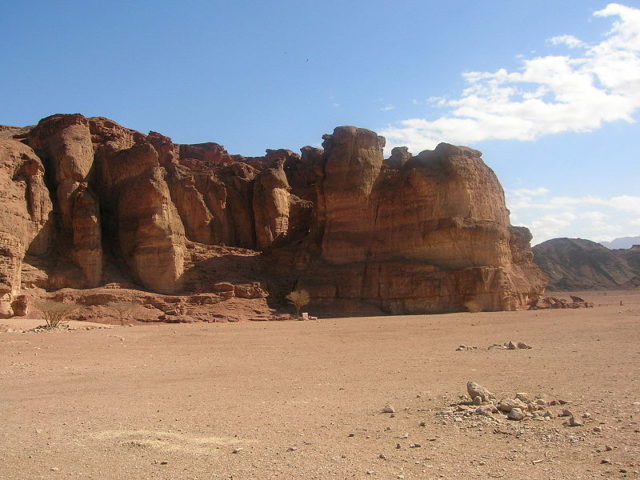According to researchers, the ruins of a gatehouse found in the Timna Valley of Israel are presumably dating back to the period of King Solomon. This hilltop gatehouse would have been part of a fortified wall protecting a copper-smelting camp known as “Slaves’ Hill.”
Experts are hoping that its discovery will help to shed light on the conflicts between the Edomites and the Israelites in the 10th century BC, hinted in the Old Testament.


Archaeologists at Tel Aviv University discovered the ruin and found that it has features which suggest that the Iron Age settlement had an elaborate defense system. Excavations in the Timna Valley revealed the entrance to the old camp, including the ruins of the gatehouse that had two rooms flanking a passageway through the thick defensive walls.
It is possible that the entrance to the camp was a local landmark and was found at the venue of the administration of the camp which controlled the flow of goods and the people who were entering or leaving. The fact that there were fortifications suggests an area of military threats and political instability.

The finding sheds some light on the importance of the copper mining to this Iron Age society. It appears to be more centralized and complex than scientists first thought. The southern Levant’s copper deposits have been mined for centuries. Copper was a rare commodity back then, and it is possible that King David’s armies and the Edomites had clashed over the copper, Mail Online reported.
The camp was discovered in the 1930s by a Biblical archaeologist named Nelson Glueck, who gave the site its name, “Slaves’ Hill.” His theory was that the imposing walls were to keep the slaves inside. However, today’s opinions reveal that they protected the mine and the metalworkers inside. Previous studies examined what the slaves inside the camp were being fed – meat, pistachio nuts, and fresh fish.

Some dung from donkeys was also found– it is thought that the dung was prized in the smelting process. Animals were well fed as well as craftsmen.Their good physical condition was the prime condition of the daily work at the mines and in the trade business.
Their good physical condition was the prime condition of the daily work at the mines and in the trade business.The site will be further studied for providing any new information on the camp.
